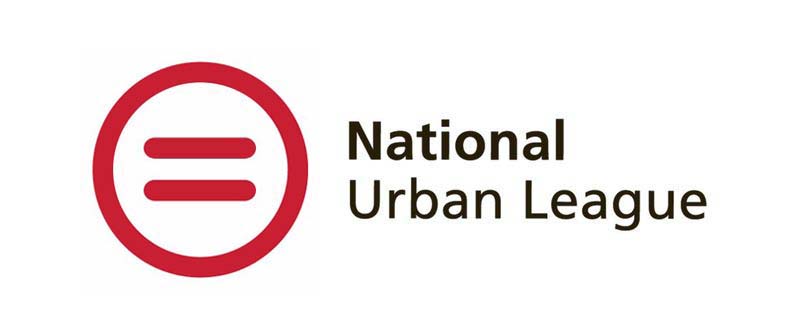An elevator pitch, also known as an elevator speech, is your 30-second introduction to who you are and what you do (or what you want to do, if you’re looking for a job).
This quick pitch is an enticing and interesting three or four-sentence summary of you. But you do more than talk about yourself. Your elevator pitch gets the listener interested in what you’re capable of.
Here’s everything you need to know about elevator pitches, including why they’re important, when to use them, and how to write an elevator pitch.
What Is an Elevator Pitch?
So, what exactly is an elevator pitch? At its core, an elevator pitch or elevator speech is a brief synopsis of who you are and what you do (or are trying to do).
It’s called “elevator pitch” to help you think about what you would say if you happened to be in an elevator with the one person who could make your career dreams come true. You’ve got that one elevator ride to convince them to continue speaking with you.
Mike Gardon of CareerCloud sums up elevator pitches like this: “When meeting someone for the first time, we all get asked what we do, right? Well, an elevator pitch is how you answer that question.”
An elevator pitch, also known as an elevator speech, is your 30-second introduction to who you are and what you do (or what you want to do, if you’re looking for a job).
This quick pitch is an enticing and interesting three or four-sentence summary of you. But you do more than talk about yourself. Your elevator pitch gets the listener interested in what you’re capable of.
Here’s everything you need to know about elevator pitches, including why they’re important, when to use them, and how to write an elevator pitch.
In many respects, an elevator pitch is all about you. And though it may seem strange — uncomfortable even — to talk about yourself, a well-designed elevator pitch starts with you and ends with the listener. Essentially, you’re trying to introduce yourself to the person you’re speaking with, but you’re doing so in a context that’s relevant to them. For example, if you’re hoping to connect with them because you want to learn more about their industry, you might end your elevator pitch with some call to action about setting up an informational interview.
Gardon explains, “The elevator pitch is designed to engage the person with whom you are communicating, and get them to take some next action. Think about it like this: if you were writing an email, the elevator pitch would be the subject line plus the next couple of lines that are shown in an inbox. The purpose is to get the recipient to open the email.”
In the case of your elevator pitch, you’re attempting to spark a longer conversation (or later meeting) with someone who could potentially help you professionally.

Building Your Personal Brand
Get the tips and tricks you need to build your personal brand in this free course from Ashurst UK. Learn why a personal brand matters for job seekers and how you can build yours.
Avg. Time: 2-3 hours
Skills you’ll build: Brand management, LinkedIn profile, image, self-assessment
When You Should Use an Elevator Pitch
Your elevator pitch comes in handy when you’re looking for a job. But you’ll also use various versions of your elevator pitch in situations like:
- Networking events: Meeting multiple people with shared interests, industry, or in the same location, when you’re introducing yourself
- Prospecting for new sales and clients: Explaining who you are to prospective customers, specifically situating your role within the company and the product you’re selling
- When you’re interviewing and asked, “Tell me about yourself.”: Giving an overview of your experience, skills, and why you’re a good fit for the job
- As the “about me” on LinkedIn, Twitter, or other social media page: Sharing a short summary of your professional achievements for any potential connections, recruiters, or hiring managers who may see it
- In the summary of qualifications on your resume: Giving the recruiter or hiring manager a quick overview of who you are and what you do before going into more detail in the rest of your resume
How Long Should an Elevator Pitch Be?
While elevator ride times vary, the general rule of thumb is that an elevator pitch is no longer than 30 seconds, which means your pitch needs to be concise.
What does that mean? Your elevator pitch can’t include every accomplishment from every job and internship you’ve had. You have to limit yourself to just the top one or two most recent ones.
A great way to help you visualize what a 30-second elevator pitch looks like is to write your elevator speech down, but limit yourself to four sentences. This should help you focus on your top highlights.
How to Write an Elevator Pitch
In general, an elevator pitch template includes four essential elements:
- Who you are
- What you do
- What’s unique about you
- What your “ask” is
Though the “meat” of your pitch likely doesn’t change often, you should prepare multiple versions of your elevator speech that you can tailor for different situations.
For example, if you’re a student, the elevator pitch you use at a career fair may not be the same one you use at a networking event. Likewise, if you’re changing careers, you may need to switch up what your “ask” is depending on who you talk to.

Interview Success
Get prepped and ready for your next interview in this free course from BCLP. You'll practice your video interviewing skills, learn how to ace the assessment, and more.
Avg. Time: 2-3 hours
Skills you’ll build: Communication, presentation, public speaking, organization, time management
“I wear so many different hats and am involved in different businesses,” Gardon says. “So, if I want someone to be a guest on my podcast, I might tell them how we’ve done over 400 episodes, instead of telling them that I’m a former derivatives trader.”
Also, while the below elements are crucial to your elevator pitch, they can go in almost any order. A good elevator speech usually begins with your name, but you may find that listing your skills before your accomplishments is better for your situation.
Elevator Pitch Part 1: Who Are You?
Your elevator pitch begins with your name, of course, but also consider throwing in a “hook” that gives the person you’re speaking with an opening to ask you questions. Here are some beginning of elevator pitch examples:
“I’m [your name], a recent graduate of [university] with a degree in [your degree].”
“My name is [your name] and I’m a junior at [university] majoring in [your major].”
“I’m [your name] and while I’m currently in graphic design, I’ve decided I want to change gears and become a product designer.”
You’ll notice that none of these hooks are particularly unusual, but they do invite the listener to follow up with you. They might ask why you chose your major, what you thought of your school, or why you decided to switch to a new career.
Elevator Pitch Part 2: What Do You Do?
The second part explains what you do. However, you shouldn’t limit yourself to a job title. This is the place to mention one outstanding accomplishment from your job, internship, or even a class that will wow your listener.
Like all parts of your elevator speech, this needs to be brief, but it should also be detailed and help the listener get an idea of what you’re capable of:
“During my marketing internship at [name of company], I grew social media engagement by 43%, which resulted in an uptick in newsletter sign-ups year over year.”
“Our business is small, but that lets us have more personal interaction, which has helped us keep a loyal and profitable client base for 15 years.”
“After learning about the stock market, I wanted to test what I learned as well as my skills, so I created a mock portfolio that’s realized a 24% gain over the last year.”
Elevator Pitch Part 3: What’s Unique About You?
The next section includes something unique about you. While this can include specific skills, you can also trace your career path or accomplishments to illustrate how you use your skills.

You Are Extraordinary
Learn how to identify and overcome Imposter Syndrome in this free course from Ashurst UK. You'll learn to identify what Imposter Syndrome feels like and how to identify your strengths.
Avg. Time: 3-4 hours
Skills you’ll build: Self-awareness, interview prep, growth mindset, positive self talk.
Because you only have 30 seconds, you might be tempted to list your skills or accomplishments like a grocery list. But try to link them to an outcome or something you can do.
“I enjoy analyzing data and using the results to plan my content calendar, including social media posts.”
“I worked on my college newspaper, starting on the sports beat, eventually moving my way up to chief editor.”
The first example mentions one skill (data analysis) and two outcomes (planning the content calendar and social media posts). The second example doesn’t mention any skills but illustrates the speaker’s career path (sports beat to chief editor), demonstrating professional growth by taking on increased responsibility.
>>Need help connecting your skills to outcomes? Read How to Use the STAR Method for Interview Questions for practical tips and advice.
Elevator Pitch Part 4: Call to Action (or What’s Your Ask?)
The final part of your elevator pitch includes a call to action. Or, more specifically, what are you asking for?
Much like networking, you may not want to blurt out “a job!” even if that’s your desired outcome. This section is what you hope will happen, which could be a job, internship, or just a new networking connection.
“I would love to speak to you about being a potential mentor, if you have time.”
“I’d like to follow up with you about how I can get involved in and conduct summer research.”
“Can you tell me how you decided on [this] career?”
Each of these invites the listener to continue engaging with you either right now or in the future.
Optional Part 5: Something Memorable
Finally, depending on the situation, you might want to include something memorable in your elevator pitch. This is situation-dependent and only something you should do if you’re comfortable.
For example, the pitch on Gardon’s LinkedIn profile says, “Earned the Title ‘World Champion Funniest Person In The World (to my kids)’.”
Of course, not everyone can be the “Funniest Person in the World,” but your memorable fact could be your love of science fiction, who your favorite author is, or that you just adopted a cat.

Professional Skills
Learn what your professional values are in this free course from Discover Financial Services. You'll identify what your non-negotiables are and how to find workplaces that align with those values.
Avg. Time: 2-3 hours
Skills you’ll build: Self-reflection, planning, organization, discovery
12 Elevator Pitch Examples
So, what happens when you put the pieces of your elevator pitch template together? Here are some elevator speech examples:
“I’m David, a rising senior at XYZ University and an education major. I spent last year student teaching at my old high school, and it was quite the experience being on the other side. I’m graduating in the spring and am looking to teach high school biology.”
“I’m Ella, and I’m currently an individual contributor at XYZ company running the social media accounts. I use Google Analytics to analyze and improve content performance, and my personal TikTok has XXX followers. I’m looking to move to a leadership role at a mid to large-size company where I can mentor others.”
“I’m Mike and I’m a sophomore at XYZ university. When I was a kid, I really wanted to communicate with animals, which is partly why I’m majoring in zoology. I’m not sure what career is best suited for me. Can you tell me how you ended up in yours?”
“I’m Sarah, a recent graduate with a degree in English. I’ve spent the past year teaching English as a second language in South America. I’m passionate about helping students reach their full potential and am eager to join a dynamic school environment.”
“I’m Alex, a marketing major with a strong background in social media. I’ve successfully managed social media campaigns for multiple brands, recently driving a 40% increase in engagement for a New York-based lifestyle brand. I’m looking for a role where I can leverage my social media skills to help companies connect with their target audience.”
“I’m Emily, a journalism major with experience in both print and digital media. I’ve written articles for our campus newspaper and interned at a local news station. I’m passionate about storytelling and want to pursue a career in journalism or content creation.”
“I’m Ethan, a recent graduate with a degree in data science. I’ve interned at a consulting firm where I analyzed large datasets to identify trends and make recommendations. I really loved working in consulting, and I’d love to learn more about how you got your start in management consulting.”
“Hi, I’m Ben, a computer science graduate with a passion for full-stack development. I’ve built several personal projects, including an app that helped my classmates organize their class schedule, which now has over 1,000 users. I’m skilled in Python, SQL, and HTML and I’m looking for a role where I can contribute to educational software projects.
“I’m Daniel, and I’ve been working in HR for two years with a proven track record of improving employee satisfaction. In my current role, I’ve implemented a new employee recognition program that increased morale by 35% and reduced turnover by 10%. I saw your LinkedIn post about what you’re doing with employee surveys, and I’d love to learn more.”
“I’m Noah, a recent graduate who’s interested in supply chain management. I have experience in streamlining operations from my last internship, where I reduced inventory costs by 20% and improved delivery times by 32%. I’m looking for a role where I can use my analytical skills to optimize supply chains and improve efficiency.”
“Hi, I’m Eleanor. I’m a recent graduate in marketing with a passion for data analysis. I’m interested in learning more about career opportunities in the tech industry. Would you be available for a 15-minute conversation to talk about breaking into the field?”
“I’m Olivia, a recent graduate with a degree in sociology. I’m passionate about social justice and want to pursue a career that makes a positive impact, specifically in the education sector. Do you have any recommendations for organizations or nonprofits that align with my interests?”
How to Deliver Your Elevator Pitch: Dos and Don’ts
Once you’ve written (and rewritten) your elevator pitch, you’re almost ready to try it out. Before you do, though, ensure your delivery is memorable — for the right reasons!
Here are a few tips for nailing your elevator pitch — and common mistakes to avoid.
Do Practice, Practice, Practice
Practice makes perfect, of course. And while you don’t want to sound too rehearsed, you also don’t want to trip over your elevator pitch or start rambling. Practice your speech in front of a mirror, with friends or family, or record yourself to make sure you’re getting it right.
Do Time Yourself
Thirty seconds can feel like forever or fly right by. Time yourself to make sure your elevator speech isn’t too long or too short, and adjust as necessary.
Don’t Sound Like a Robot
While you’ll want to use your “inside voice,” vary your tone. When you give a rehearsed speech, it should be polished but not robotic. Try to bring some excitement to your voice as you speak.
Do Speak Slowly
You may want to cram as much as possible into your 30-second elevator speech, but that could result in you speaking too quickly, making it tough for the listener to understand you. As hard as it might be, stick to one or two main points. Use your call to action to entice the listener to connect with you and learn more.
Don’t Ignore the Listener
While this elevator pitch is about you, it’s also about making a connection with whoever is listening to you. That means that while you want to nail your pitch, you can’t just focus on yourself — pay attention to their verbal and nonverbal cues, and adjust your strategy if necessary.
Make Your Elevator Pitch: The Bottom Line
An elevator pitch is useful in all sorts of professional (and even personal!) situations. By taking stock of what you do and what you want to do, you’ll find the perfect elements to include in yours and impress the next person you pitch it to.
Want more tips and tricks to help you create the perfect elevator pitch? Enroll in a free Forage interview and career skill job simulation today.
Image credit: Canva


